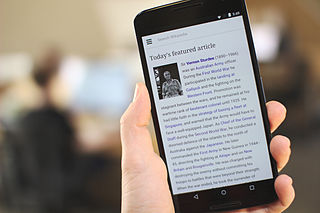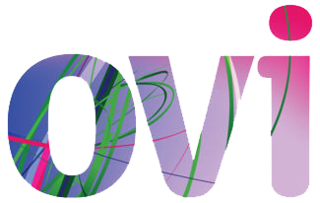Features
Qeep essentially operates as a self-contained software bundle of interactive features.
QMS
The qeep messaging service is a short message service internal to the qeep network. Message content is compressed by a proxy server system and exchanged via GPRS or UMTS within the mobile application. This greatly reduces the expense of sending messages, essentially leaving the accompanying data transfer rate as the only remaining cost. However, with the exception of invitations sent to new members, QMS cannot be sent to mobile phones outside of qeep's network, nor can those messages be read outside of the qeep program. [10]
Photoblogging
While qeep does not offer any sort of digital photography software, it does permit mobile phones with built-in camera to take and store pictures within the qeep database. These photos are organized in individual user's photoblogs, which are preserved in the qeep database rather than on the mobile itself. Rather than sharing their pictures through individual – and expensive – picture messages, users can display daily adventures in their photoblogs, which are linked to their qeep profiles. [11] This simultaneously offers the user near-limitless storage space while also limiting photo access to within the qeep program. Thus the qeep photoblog system operates along a similar model to online photo sharing networks.
Games
As of December 2009, qeep's application package includes a range of turn-based live games. The games on qeep can all be played solo or in real time against another qeep user. "Battleships," the first game released on qeep, [12] [13] is based upon the classic game of similar name, while "Quadrix" is a Connect Four equivalent. A specialized version of Tic-tac-toe was introduced in October 2008. [14] In March 2009, qeep released Crazy 8's, a strategic card game, as its fourth game. [15] FlipChip, a Reversi equivalent, is qeep's fifth game and was released in December 2009. [16]
In May 2012 three new games were added to the Android portfolio of qeep mobile games: Gangs of Crime City and Jewels Island. All three are developed by the Berlin-based mobile entertainment company Softgames, which became qeep's first third-party game partner, unlocking an audience of over 13 million registered users worldwide. [17]
Sound attacks
Sound Attacks are mp3 audio files built into the qeep network. Users send messages to one another's phones, activating the appropriate sound on the recipient's handset. The sound file is then played on the recipient's phone automatically. Since a number of these sounds are meant to be humorously vulgar or inappropriate, this unprovoked sound is essentially an "attack" on the recipient's phone. [18] Additional listings have also been included for special occasions, such as the Christmas season. [19]
Java Platform, Micro Edition or Java ME is a computing platform for development and deployment of portable code for embedded and mobile devices. Java ME was formerly known as Java 2 Platform, Micro Edition or J2ME.

A smartphone, often called simply a phone, is a mobile device that combines the functionality of a traditional mobile phone with advanced computing capabilities. It typically has a touchscreen interface, allowing users to access a wide range of applications and services, such as web browsing, email, and social media, as well as multimedia playback and streaming. Smartphones have built-in cameras, GPS navigation, and support for various communication methods, including voice calls, text messaging, and internet-based messaging apps.
A ringtone is the sound made by a telephone to indicate an incoming telephone call. Originally referring to the sound of electromechanical striking of bells or gongs, the term refers to any sound by any device alerting of an incoming call.

The N-Gage is a mobile device combining features of a cellular phone and a handheld game system developed by Nokia, released on 7 October 2003. Officially nicknamed as the game deck, the N-Gage's phone works on the GSM cellular network, and software-wise runs on the Series 60 platform on top of Symbian OS v6.1.
The Nokia 3310 is a discontinued GSM mobile phone announced on 1 September 2000, and released in the fourth quarter of the year, replacing the popular Nokia 3210. It sold very well, being one of the most successful phones, with 126 million units sold worldwide, and being one of Nokia's most iconic devices. The phone is still widely acclaimed and has gained a cult status due to its reputation for durability.

A mobile phone feature is a capability, service, or application that a mobile phone offers to its users. Mobile phones are often referred to as feature phones, and offer basic telephony. Handsets with more advanced computing ability through the use of native code try to differentiate their own products by implementing additional functions to make them more attractive to consumers. This has led to great innovation in mobile phone development over the past 20 years.
Push email is an email system that provides an always-on capability, in which when new email arrives at the mail delivery agent (MDA), it is immediately, actively transferred (pushed) by the MDA to the mail user agent (MUA), also called the email client, so that the end-user can see incoming email immediately. This is in contrast with systems that check for new incoming mail every so often, on a schedule. Email clients include smartphones and, less strictly, IMAP personal computer mail applications.

The Nokia N95 is a mobile phone produced by Nokia as part of their Nseries line of portable devices. Announced in September 2006, it was released to the market in March 2007. The N95 ran S60 3rd Edition, on Symbian OS v9.2. It has a two-way sliding mechanism, which can be used to access either media playback buttons or a numeric keypad. It was first released in silver and later on in black, with limited edition quantities in gold and purple. The launch price of the N95 was around €550.
The online service imeem was a social media website where users interacted with each other by streaming, uploading and sharing music and music videos. It operated from 2003 until 2009 when it was shut down after being acquired by MySpace.

Wireless Application Protocol (WAP) is an obsolete technical standard for accessing information over a mobile cellular network. Introduced in 1999, WAP allowed users with compatible mobile devices to browse content such as news, weather and sports scores provided by mobile network operators, specially designed for the limited capabilities of a mobile device. The Japanese i-mode system offered a competing wireless data standard.

Ovi was the brand for Nokia's Internet services from 2007 to 2012. It was designed to be an umbrella brand as Nokia attempted to expand into software and Internet services instead of just mobile hardware. Ovi focused on five key service areas offered by Nokia: Games, Maps, Media, Messaging and Music.
A mobile operating system is an operating system used for smartphones, tablets, smartwatches, smartglasses, or other non-laptop personal mobile computing devices. While computers such as typical/mobile laptops are "mobile", the operating systems used on them are usually not considered mobile, as they were originally designed for desktop computers that historically did not have or need specific mobile features. This "fine line" distinguishing mobile and other forms has become blurred in recent years, due to the fact that newer devices have become smaller and more mobile, unlike the hardware of the past. Key notabilities blurring this line are the introduction of tablet computers, light laptops, and the hybridization of the two in 2-in-1 PCs.

N-Gage, also referred to as N-Gage 2.0, was a mobile gaming digital distribution platform from Nokia that was available for several Nokia smartphones running on S60 (Symbian). The successor to the original N-Gage gaming device and launched as part of their Ovi initiative in 2007, it aimed to offer AAA games for trial and purchase into a single application with full compatibility to all devices, along with online multiplayer and social features using N-Gage Arena via in-house servers. Games on the platform were natively coded or ported using C++ although N-Gage used APIs from its own SDK separate from Symbian's. Testing began in Finland in February 2007, but the service faced numerous delays before the service finally rolled out on April 3, 2008 with five launch titles, initially for Nokia N81, N82 and N95 owners.

MSN Messenger, later rebranded as Windows Live Messenger, was a cross-platform instant-messaging client developed by Microsoft. It connected to the now-discontinued Microsoft Messenger service and, in later versions, was compatible with Yahoo! Messenger and Facebook Messenger. The service was discontinued in 2013 and was replaced by Skype.

A mobile phone, or cell phone, is a portable telephone that allows users to make and receive calls over a radio frequency link while moving within a designated telephone service area, unlike fixed-location phones. This radio frequency link connects to the switching systems of a mobile phone operator, providing access to the public switched telephone network (PSTN). Modern mobile telephony relies on a cellular network architecture, which is why mobile phones are often referred to as 'cell phones' in North America.

Symbian was a mobile operating system (OS) and computing platform designed for smartphones. It was originally developed as a proprietary software OS for personal digital assistants in 1998 by the Symbian Ltd. consortium. Symbian OS is a descendant of Psion's EPOC, and was released exclusively on ARM processors, although an unreleased x86 port existed. Symbian was used by many major mobile phone brands, like Samsung, Motorola, Sony Ericsson, and above all by Nokia. It was also prevalent in Japan by brands including Fujitsu, Sharp and Mitsubishi. As a pioneer that established the smartphone industry, it was the most popular smartphone OS on a worldwide average until the end of 2010, at a time when smartphones were in limited use, when it was overtaken by iOS and Android. It was notably less popular in North America.
Mobile security, or mobile device security, is the protection of smartphones, tablets, and laptops from threats associated with wireless computing. It has become increasingly important in mobile computing. The security of personal and business information now stored on smartphones is of particular concern.
A mobile application or app is a computer program or software application designed to run on a mobile device such as a phone, tablet, or watch. Mobile applications often stand in contrast to desktop applications which are designed to run on desktop computers, and web applications which run in mobile web browsers rather than directly on the mobile device.
Microsoft mobile services are a set of proprietary mobile services created specifically for mobile devices; they are typically offered through mobile applications and mobile browser for Windows Phone platforms, BREW, and Java. Microsoft's mobile services are typically connected with a Microsoft account and often come preinstalled on Microsoft's own mobile operating systems while they are offered via various means for other platforms. Microsoft started to develop for mobile computing platforms with the launch of Windows CE in 1996 and later added Microsoft's Pocket Office suite to their Handheld PC line of PDAs in April 2000. From December 2014 to June 2015, Microsoft made a number of corporate acquisitions, buying several of the top applications listed in Google Play and the App Store including Acompli, Sunrise Calendar, Datazen, Wunderlist, Echo Notification Lockscreen, and MileIQ.









